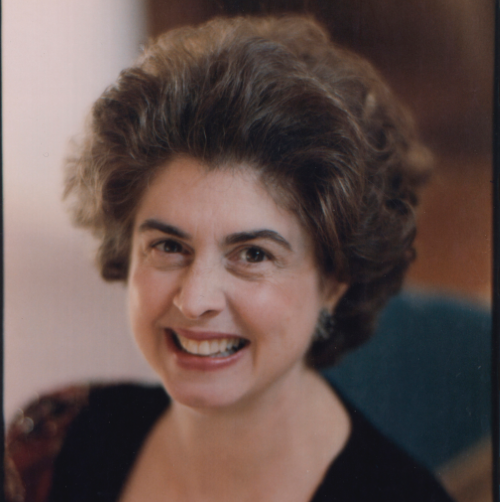Key Pianists presents Ann Schein in Review
Key Pianists presents Ann Schein, piano
Weill Recital Hall at Carnegie Hall, New York, NY
October 5, 2016
I attended the most marvelous poetry reading last night. I’m sure you are thinking “Is he out of his mind?” Perhaps, from time to time, but in this case no: the poet was legendary pianist Ann Schein, and she read from the poetry of Beethoven, Schumann, and Chopin.
The hall was full and enthusiastically expectant, and they were not disappointed. From the outset, even in taking the stage, Ms. Schein radiates good-will, warmth, humility, and a sort of maternal embrace—these qualities were returned to her tenfold by the audience.
She began with an account of Beethoven’s programmatic sonata, Opus 81a, in E-flat major, nicknamed Les Adieux (The Farewells), that has three movements motivated by the subjects of Farewell, Absence, and Return, all of them linked by a descending posthorn motto. Immediately, in the Adagio introduction to the first movement, Schein made us aware of an interior stillness leading to sadness (and ultimately to a joyous reunion). This quality is not often audible in routine performances. The piano tone was sumptuous at all times. Beethoven’s sometimes awkward writing for the hands never sounded thus. The bleak, almost neurotic, “absence” movement was perfectly rendered, leading to the puppy-like dancing about the wheels of the carriage bearing the returning Archduke. Never have I seen or heard the extravagant leaps in the right hand dispatched with such appropriate happiness.
This brings me to an attempt to summarize the many virtues of Ms. Schein’s pianism: 1) she is able to “project intimacy”; 2) she understands and feels phrase grouping, harmonic motion, and the sense of arrival, such moments are generously breathed and punctuated; 3) her beautiful motions become e-motions; 4) she possesses uncanny sincerity; 5) meaning and feeling are at all times joined; and 6) simplicity and generosity are also at all times united.
The second work was, for me, the absolute pinnacle of an outstanding program: Schumann’s great Davidsbündlertänze, Op. 6 (Dances of the League of David). This is a work with multiple sources and meanings—Schumann’s imaginary league of great creators vanquishing the Philistines of culture; the three sides of his own fervid personality: Florestan, the fiery impetuous one, Eusebius, the dreaming poet, and Master Raro, the mediator between the two; and Schumann’s often fraught relationship/courtship of the young girl who would eventually in fact become his wife, Clara Wieck. This piece gives pause to many seasoned professional pianists, who may not trust their ability to be poetic enough.
The work is a series of eighteen character pieces in the guise of dances, tightly linked with mottos (notably the descending “Clara” scale). In the first edition, each piece (save for three) is marked with initials “E” or “F” for its authorship by one of the aforementioned aspects of Schumann. Personally, I am drawn to the Eusebian sections, but I always have to realize that they wouldn’t emerge as beautifully without the contrasts around them. Full disclosure: many of Eusebius’ tears (mentioned in the program to the piece) stole silently down my own cheeks as this unforgettable rendition was happening. I had to hold my breath many times, so intense and revelatory was this performance. Each section was miraculous, with punctuations that I had never considered before. Particularly effective was Schein’s handling of the many coda or codetta sections, which put a metaphorical halo over what had come before. The final wistful waltz, with its mash-up of tonic and dominant at the beginning, was heartbreaking. One wanted this work (and possibly the entire recital) to be twice as long.
After intermission Ms. Schein gave us Chopin’s third and final piano sonata, Op. 58 in B minor. This is a massive work, with enlarged scope and heroism, and it led me to think what might have been if Chopin had not died at the untimely age of thirty-nine, but had lived to hear and see the Wagner operas. All of Ms. Schein’s tremendous virtues were present in this reading, including a feather-light Scherzo and the noble Bellini-like song of the third movement. As the finale arrived, Ms. Schein really seemed to let go and just tap into something primal, no caution, just abandon (but with all the fine shaping that we had come to expect.) Its triumphant ending inspired an instant standing ovation.
She favored us with two encores, of which the first was spellbinding, a new “definitive” performance in my opinion of a work that is often just “passed over”: Chopin’s second of the Trois Nouvelles Etudes, in A Flat. After that, Schein again just let loose and reveled in her ability with Rachmaninoff’s second Prelude from Op. 23, in B-flat major. I doubt this pianist has ever played an unmusical note in her life. Her mentor Mieczyslaw Munz predicted for her “a long life in music,” and he was so right. Thank you, Ann, for sharing this beauty with a world so in need of it.

